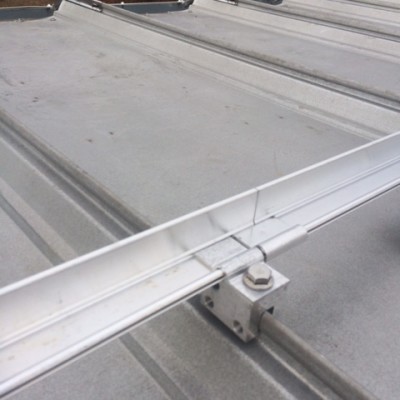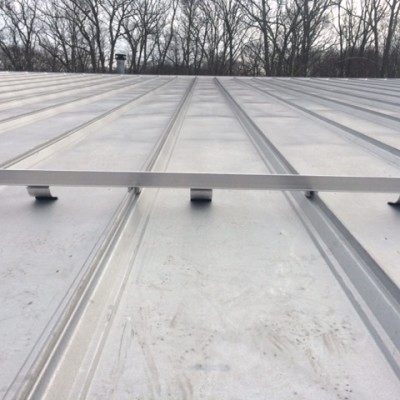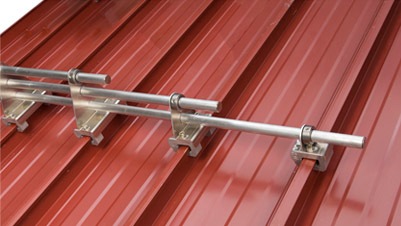Sloped Metal Roof Systems Need Snow Retention Capability
As snow and ice build up on a sloped metal roof, melting creates a slippery film of water between the snow and roof surface. This can cause an unexpected amount of dangerous snow and ice to fall on pedestrian areas, vehicles, landscaping, gutters, vents, skylights, atriums, and lower roofs.
Snow retention systems are an economical way to safeguard people and objects. They hold the snow and ice on a sloped roof surface, causing it to fall in small amounts or melt completely on the roof surface. In addition, they help to evenly distribute snow and ice weight to prevent roof damage.
Centuries ago European builders placed rocks or logs on metal roofs to prevent snow from sliding. Their work evolved to what is available in today’s solutions. American innovations began in Colorado and then spread throughout our industry. In 1980 a snow bar system, designed for standing seam roofs, included a non-penetrating seam clamp and threaded rod that fit the roof contour. Stainless steel was introduced in 1990 and in the early 2000’s galvanized paintable systems were developed to match roof colors. Today’s most popular solutions include pad style snow guards and seam mounted rail systems.
- Snow Rail System
- Snow Guard
Pad style snow guards are one-piece units that are installed in a layered pattern across a roof’s surface. These L-shaped devices help keep the snow and ice on the roof to allow it to melt slowly. They are available in stamped patterns and ornamental castings to match contemporary and traditional architecture. For heavier and deeper snow loads consider one, two or three rail systems. These non-penetrating devices also protect coatings and warranties.
A qualified builder will help you to determine if snow guards and/or snow bar systems are appropriate solutions for your building. They should recommend the right products and provide a custom pattern recommendation and safe spacing layout.
Also, since the system retains snow that would normally slide off the roof, an engineering analysis should be conducted in order to determine if structural components are required to support additional snow weight.
Finally, building owners must be proactive by removing heavy snow build up on their roof.
- Category: Tech Tips, Seasonal Tips
- Service: Tech Tips



